Have you ever wondered about the differences between beans? Does it really matter which one you choose to eat? In this article, I’ll give you a dietitian’s perspective on the differences in appearance, flavor, and nutrition between pinto beans vs black beans.

As a plant-based dietitian, I love talking about the healthy benefits of incorporating more beans into your diet. In fact, if I had to pick one food that I wish more people ate – it would probably be beans!
In this article, we’re going to discuss the differences between two common beans: pinto beans and black beans. Both have been a staple ingredient in Mexican and Latin American cuisine for hundreds of years.
Appearance and Flavor
What do pinto beans look like?
Pinto beans are a medium-sized bean that is light brown with dark brown or red flecks. When cooked, they turn a medium-brown/pink color and lose their speckled appearance. They are named after the Spanish word for “painted” which is “pintado”.
What do pinto beans taste like?
Like most beans, pinto beans have a mild flavor that is nutty and earthy. Their mild flavor pairs well with a variety of other spices like chili, garlic, cumin, and more. Once cooked, the inside takes on a soft, creamy texture while the skin remains slightly chewy. The softer texture of pinto beans makes them a great option for dishes like refried beans. Like most bean varieties, pinto beans are thought to have originated in the Peruvian highlands of South America. They were then transferred to across the Americas and other parts of the world when used as a trade commodity.
What do black beans look like?
Black beans (ie. black turtle beans) are a medium-sized bean with an oval shape that has a black skin and white interior. Even after cooking, they retain their black color.
What do black beans taste like?
Black beans have a rich earthy flavor that pairs well with a variety of seasonings. They retain their shape and chewy texture well even after cooking.

Nutrition Comparison
Both pinto and black beans are packed with nutrients like protein, fiber, iron, magnesium, potassium, and folate. Here is a side-by-side comparison of the nutritional value for each.
Pinto Beans (1 cup cooked, 171 g)
- Calories: 245 kcals
- Carbohydrates: 44.8 grams
- Fiber: 15.4 grams
- Protein: 15.4 grams
- Fat: 1 gram
- Calcium: 6.5% of the Daily Value (DV)
- Iron: 19% DV
- Magnesium: 20% DV
- Phosphorus: 20% DV
- Potassium: 16% DV
- Folate: 74% DV
- Thiamin: 28% DV
- Choline: 11% DV
Black Beans (1 cup cooked, 172 g)
- Calories: 227 kcals
- Carbohydrates: 41 grams
- Fiber: 15 grams
- Protein: 15.2 grams
- Fat: 1 gram
- Calcium: 4% of the Daily Value (DV)
- Iron: 20% DV
- Magnesium: 29% DV
- Phosphorus: 19% DV
- Potassium: 13% DV
- Folate: 64% DV
- Thiamin: 35% DV
- Choline: 10% DV
Health Benefits of Pinto Beans and Black Beans
- Gut Health: Most people do not eat enough fiber, but it is so important for supporting a healthy gut as the fiber we eat helps feed the beneficial bacteria that lives in our digestive tract. Women should aim for 25 grams of fiber per day; men should aim for 38 grams per day. Just one cup of either black beans or pinto beans provides 40-60% of the daily value for dietary fiber. In addition, beans provide both soluble and insoluble fiber which supports the production of short chain fatty acids like butyrate in the gut. Butyrate can help reduce inflammation and reduce cancer risk.
- Heart Health: Eating a diet rich in high fiber foods like beans has been associated with better blood pressure control, lower cholesterol, and lower risk of heart disease. Beans are low in saturated fat and cholesterol-free but rich in protein so they can be a heart healthy alternative to meat.
- Blood Sugar Management: Black beans and pinto beans are low glycemic index foods so they are digested slowly and do not create a blood sugar roller coaster effect after eating. Since they are high in fiber and protein, these beans help slow the release of sugar into the bloodstream after a meal.
- Rich in Antioxidants: Both pinto beans and black beans are rich in antioxidants like polyphenols and flavonoids. Antioxidants help protect cells from free radicals which are unstable molecules that can increase the risk of chronic disease over time.
- Bone Health: Bean varieties like black beans and pinto beans are a good source of magnesium and phosphorus which both play and important role in bone formation.
- Superfood for Pregnancy: including beans in your diet while pregnant can help you get some of the key vitamins and minerals you’ll need such as: calcium, iron, folate, and choline.

Are Black Beans or Pinto Beans Healthier?
Both black beans and pinto beans offer a variety of healthy benefits from fiber and protein to essential nutrients like 7 out of 8 of the B vitamins (especially folate), magnesium, potassium, and phosphorus. They both provide about 15 grams of fiber per 1 cup serving, which is about half of the daily needs for fiber for both men and women. the combination of soluble and insoluble fibers support healthy gut bacteria and production of beneficial short chain fatty acids.
Both beans are a great source of protein (15 grams per 1 cup). Although they do not provide every essential amino acid to be a “complete” protein, they are still a valuable source of protein as part of a balanced diet. Black beans and pinto beans are a good source of iron. To help with iron absorption, try to consume beans with a food high in vitamin C like peppers or tomatoes.
Bottom line: Since there are no significant differences between the two in terms of nutritional content, choose the type of bean that will work best in whatever dish you are trying to make.
Storage
- Dry Beans: You can store dried black beans and pinto beans for several years in a cool and dry place. Avoid high temperatures and humidity to maintain freshness.
- Refrigerator: Store beans (either cooked from dry or open canned beans) in the refrigerator in an airtight container for up to 3-4 days. The USDA recommends transferring leftover canned beans out of the can and into a storage container rather than storing them in the can.
- Freezer: Cooked beans can be stored in an airtight container in the freezer for up to 6 months. Store in single serving size containers if possible so you can defrost smaller portions at a time.
Frequently Asked Questions
Yes! Black beans are a great source of plant-based protein. One cup of black beans provides 15 grams of protein.
Add flavor to black beans with garlic, onion, cumin, and smoked paprika. Brighten the flavor by adding a squeeze of lime near the end of cooking.
Yes, canned black beans are healthy! Black beans are a great source of fiber, protein, magnesium, folate, and thiamin. If you need to limit your sodium intake, look for reduced sodium or no salt added canned black beans. Draining and rinsing canned beans also helps reduce the sodium content.
Pinto beans and kidney beans are very similar but they are two different types of beans. When cooked, pinto beans tend to have a softer, creamier texture than kidney beans.
Pinto beans have a very mild flavor so they can be paired with a variety of different spices such as: chili powder, cumin, oregano, garlic, onion, cayenne pepper, and smoked paprika.

Cooking with Black Beans vs Pinto Beans
Now that you’ve learned about the nutritional benefits of black beans and pinto beans, how can you eat them? Luckily, there are so many low effort ways to incorporate more beans into your diet! Here are some of my favorite ways to eat them:
- Add to soups and chilis: add a can of black beans or pinto beans to a favorite soup or chili recipe as a quick way to add protein and fiber. For chili, you could replace or reduce the meat with canned beans to reduce the cholesterol and fat in the dish and increase the fiber content.
- Use as a salad topper: both black beans and pinto beans make a great addition to taco salads.
- Puree into bean dips: add either bean to a food processor with some seasonings like cumin and cayenne. Puree until smooth and serve with chips for dipping.
- Make a bowl: top a grain bowl or rice bowl with some seasoned black or pinto beans for a healthy meal option.
- Wrap into a burrito: both black beans and pinto beans make a great addition to burritos.
Recipes
Here are some of my favorite recipes using black beans and pinto beans. I almost always keep a can or two of beans in my pantry since it’s such an easy way to include more fiber, protein, and nutrients into a meal.
Be sure to check out my other ingredient match up posts:
- Seitan vs Tofu: both are packed with plant-based protein, but only one provides all of the essential amino acids. Read the post to find out which one!
- Flaxseeds vs Chia Seeds: both are loaded with plant-based omega 3 fat. However, one is loaded with lots more protein.
- Juicing vs Blending: both have a place in a healthy diet, but find out which is my one I prefer.
- Sunflower Butter vs Peanut Butter: Peanut butter is super popular, but there are so many other nut and seed butters on the market. Find out how sunflower butter stacks up.

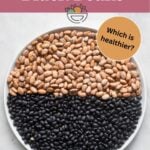


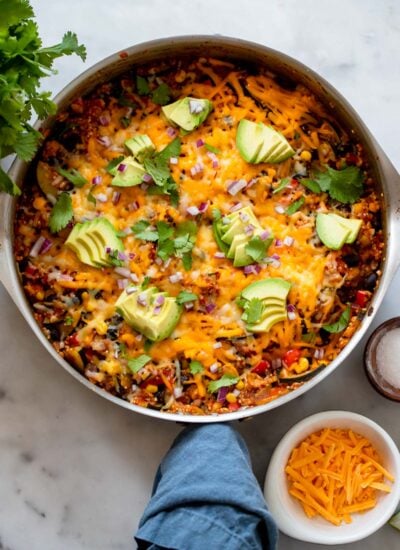

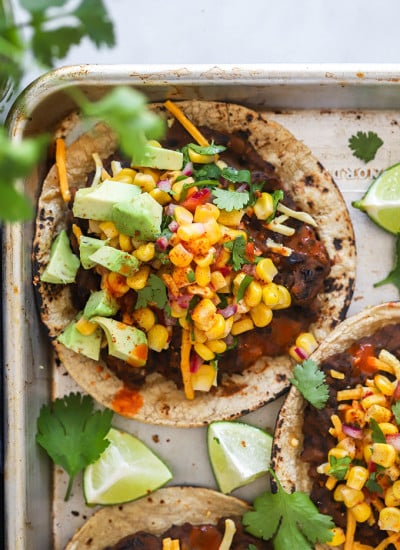


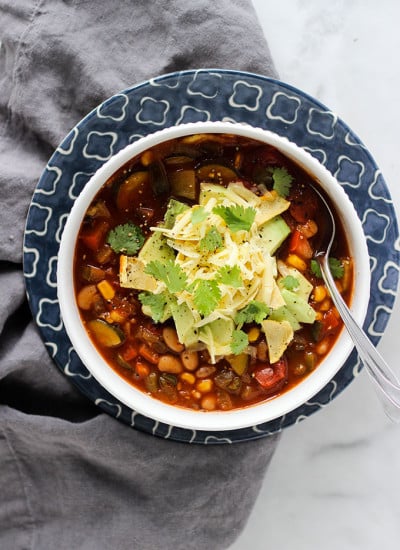

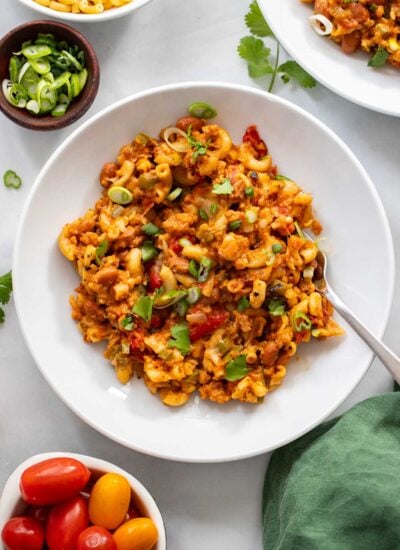





Comments & Reviews
Great tips, and genius idea to pin this!